Similar products
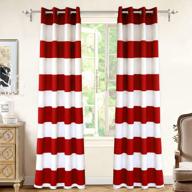

52 Review

Types of Vases to Consider for Your Home
Vases are an integral part of home decor. They allow you to add a pop of color or texture with fresh or faux flowers and foliage. When selecting vases for your home, consider the style, material, size and shape to find options that work with your existing decor.
Styles of Vases
Some popular styles of vases include:
- Modern - Clean, simple shapes with little adornment. Often made of glass, metal or stone.
- Rustic - Earthy, natural materials like terracotta or wood. Distressed finishes.
- Eclectic - A mix of materials, colors, textures and global influences.
- Minimalist - Subtle colors and clean, sparse shapes. Focus on negative space.
- Traditional - Ornate shapes and patterns. Materials like porcelain, crystal and silver.
Materials
Vases come in a variety of materials, each with their own properties:
| Material | Qualities |
|---|---|
| Glass | Transparent, luminous, delicate, modern |
| Ceramic | Opaque, earthy, varied textures and finishes |
| Metal | Shiny, smooth, industrial, strong |
| Wood | Natural, warm, organic, artisanal |
Size and Shape
Consider scale and form when selecting a vase:
- Tall, narrow vases suit dry floral arrangements.
- Wide, shallow vases work well for spreading arrangements.
- Small vases can sit on shelves, tabletops or windowsills.
- Large statement vases make an impact on the floor.
- Grouped collections of various sizes create an eclectic display.
The shape of the vase can complement your decor. For example, curved organic vases for boho or farmhouse spaces, geometric for modern, or ornate for traditional.
Another interesting products
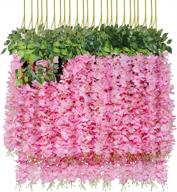

41 Review

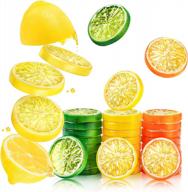

34 Review

Placement
Where you place your vases in a room can enhance the decor:
- Entryways and foyers - Greet guests with a beautiful arrangement.
- Dining tables - Centerpieces establish ambiance.
- Coffee and side tables - Draw focus to seating areas.
- Bookshelves and mantels - Fill negative space.
- Counters and islands - Add color to kitchens.
- Bathroom vanities - Tie in floral accents.
With some thought to style, material, size and placement, you can find the perfect vases to elevate your home's decor.
Where to Place Vases for Maximum Impact
Strategically placing vases full of flowers or foliage is one of the easiest ways to elevate your interior decor. The right vase in the perfect spot can help pull a room together, add a pop of color, or create a focal point.
Entryway
Welcome guests to your home with a beautiful vase in the entryway. Opt for a tall glass vase on a console table or geometric ceramic vase on the floor. Anchor it with a lush green plant like fiddle leaf fig or snake plant. The entryway sets the tone when you first enter a home, so this is an impactful spot for a vase.
Dining Room
Incorporate vases into your dining room decor in a few key ways:
- Centerpiece - Anchor your table with a low floral arrangement in a wide vase. Go for an organic shape like a ceramic bubble vase for a natural feel.
- Sideboard - Flank a sideboard or buffet with matching vases at each end to balance the space. Add height with tall cylindrical glass vases.
- China cabinet - Fill negative space in a china cabinet by placing small dainty vases on display shelves.
Living Room
In a living room, use vases to soften hard edges and add life. Try these ideas:
- Coffee table - A marble and brass urn makes a substantial centerpiece.
- End tables - Small bud vases with a few stems add a touch of green.
- Bookshelves - Display a collection of mercury glass vases in assorted shapes.
- Mantel - Anchor a mantle vignette with a pair of blue and white porcelain vases.
Kitchen
The kitchen is a high-traffic area that can benefit from some softening with flowers. Ideas include:
- Island - A large glass vase overflowing with fresh eucalyptus draws the eye.
- Windowsill - Line up a row of tiny vases along the windowsill over the sink.
- Counters - Scatter a few small posy vases down an empty stretch of countertop.
Top products in 🏺 Vases
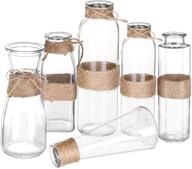

9 Review

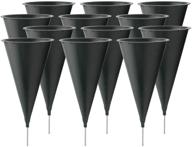

9 Review

Bathroom
Bringing floral accents into the bathroom instantly elevates the space. Place vases:
- On the vanity - Flank the sink with a pair of ceramic vases.
- In the shower - Add a waterproof glass vase filled with bamboo to the corner.
- By the tub - Set a compact vase on a Bath caddy or side table.
Get creative with vase placement throughout your home. Discover spots where a pop of floral style can make a big decorative impact.
Vase Materials: Pros and Cons of Glass, Ceramic and Metal
Vases come in a variety of materials, each with their own characteristics. Three of the most popular options are glass, ceramic and metal.
Glass Vases
Glass vases have a light, airy quality and are available in many colors, shapes and styles.Pros:
- Transparent - Allow water and flowers to be visible.
- Luminous - Glass has a lovely glow and shimmer.
- Modern - Glass has a sleek, contemporary look.
- Durable - Resists chipping and scratching.
- Affordable - Found at most price points.
Cons:
- Fragile - Prone to breaking if knocked over.
- Shows smudges - Needs frequent cleaning.
- No insulation - Won't keep water warm for cut flowers.
Ceramic Vases
From polished porcelain to rustic earthenware, ceramic vases have natural appeal.Pros:
- Varied textures - Smooth, crackled, matte and more.
- Easy to clean - Ceramic wipes clean easily.
- Earthy material - Has a handcrafted, organic feel.
- Traditional - Classic decorative accessory.
- Affordable - Many budget-friendly options.
Cons:
- Porosity - Unglazed terracotta soaks up water.
- Heavy - Difficult to move once filled.
- Brittle - Can chip or crack if dropped.
- No insulation - Won't keep water warm.
Metal Vases
From sleek chrome to rustic iron, metal vases have an industrial vibe.Pros:
- Strong - Durable and long-lasting.
- Edgy material - Modern, urban feel.
- Holds temperature - Keeps water warm for cut flowers.
- High style - Brass, copper and more add glam.
- Food safe - Many can hold fruit.
Cons:
- Expensive - Often costs more than glass or ceramic.
- Heavy - Not easily moved when holding flowers.
- Prone to dents - Softer metals dent if dropped.
- Vulnerable to rust - Ungalvanized metals can corrode.
Consider the pros and cons when selecting a material. Glass, ceramic and metal all have unique benefits and drawbacks.
Choosing Vases to Complement Your Decor Style
Vases come in endless shapes, colors, patterns and materials. To make sure your vases enhance your decor instead of clashing, choose options that align with your interior design style.
Modern Style
The clean lines and minimal ornamentation of modern style work best with vases that are:
- Geometric shapes - cube, cylinder, pyramid
- Glass or acrylic
- Solid colors like white, black, gray
- Metallic finishes
- Simple and unadorned
Eclectic Style
If you have an eclectic space mixing eras, cultures and aesthetics, fun unique vases fit right in:
- Vintage or antique vases
- Handmade ceramic vases
- Painted or mosaic glass
- Whimsical shapes
- Global designs and textures
Rustic Style
For rustic rooms, choose vases with a natural, earthy look:
- Terracotta or wood
- Neutral tones like brown, tan, cream
- Ceramic with crackle glaze
- Galvanized metal
- Worn, distressed finishes
Industrial Style
The structured utilitarian look of industrial decor works well with:
- Galvanized metal vases
- Straight-sided glass cylinders
- Concrete vases
- Enamelware
- Copper or brass
Traditional Style
Formal ornate traditional rooms pair nicely with vases that have:
- Elaborate shapes with curves, flutes or decorative accents
- Cut glass, crystal or porcelain
- Gold, silver or jewel tones
- Florals, damask or antiques patterns
Choosing vases suited to your decor style pulls a room together. The vase finish and design should complement your color scheme and existing aesthetics.
Tips for Arranging Flowers in a Vase
Arranging fresh flowers in a vase can instantly lift your mood and add beauty to your home. Follow these tips for creating stunning floral displays:
Choose Complementary Colors
Select flowers in colors that complement each other and your decor. Analogous colors next to each other on the color wheel, like yellow, orange and red, work nicely. Contrasting colors like purple and yellow can make arrangements pop.
Vary Heights
- Use a mix of tall, medium and short stems.
- Angle stems in different directions.
- Let some blooms extend above the lip of the vase.
This creates visual interest and a natural, freeform look.
Include Filler Flowers and Greenery
Add affordable bulk with filler like baby's breath, ferns or eucalyptus. Greenery softens arrangements and connects the colors.
Use Odd Numbers of Stems
Odd numbers like 3, 5 or 7 stems per type of flower look more organic than even numbers.
Layer Stems and Shapes
Place larger, showy blooms towards the center and bottom of the vase. Surround them with delicate greens, vines and spray flowers.
Cut Stems at an Angle
Slice stems diagonally to maximize water intake and keep flowers fresh longer.
Clean the Vase
Wash vases thoroughly before use. Add fresh water and floral preservative to prolong bloom time.
Trim Thorns
Prune thorns with floral shears so they don't puncture other stems.
With these simple tips, you can create gorgeous floral arrangements to enjoy in every room.
Vase Shapes and Sizes Guide
Vases come in a diverse array of shapes and dimensions. Consider scale and form when selecting vases for different needs and placements.
Tall Vases
- Height range: 16-36 inches
- Slim, vertical silhouette
- Suit dry floral stems and branches
- Best for floor placements
Bud Vases
- Height range: 5-7 inches
- Compact, petite size
- Hold a few stems or one focal bloom
- Ideal for desks, shelves, side tables
Cube Vases
- Height range: 4-12 inches
- Equal width, depth and height
- Offer a bold, geometric shape
- Great for modern decor
Bowl Vases
- Height range: 4-8 inches
- Low profile, round silhouette
- Allow flowers to spread out
- Perfect for dining table centerpieces
Trumpet Vases
- Height range: 12-18 inches
- Narrow base, flared top
- Suit loosely arranged stems
- Add height to mantels, shelves
Urn Vases
- Height range: 16-36 inches
- Large, bulbous body with slim neck
- Make substantial statements in entryways
- Often used in pairs
Consider the vase's purpose, floral contents and placement when deciding on shape and size. Mix heights, silhouettes and scales for an eclectic collection.
Cleaning and Caring for Your Vase Collection
With regular cleaning and proper care, your favorite vases can stay looking beautiful for years. Follow these tips to maintain your treasured vase collection.
Dust Regularly
Over time, dust accumulates on vases even when not in use. Wipe down glass, ceramic, metal and other smooth vases weekly with a microfiber cloth to remove dust and fingerprints.
Wash After Each Use
When vases hold real flowers, dirt, debris and bacteria can build up in the water and on the sides. After each use, hand wash vases with mild dish soap and warm water. Rinse thoroughly.
Clean Glass with Vinegar
For hard water deposits or stains on glass vases, fill vase with warm water and 1 cup distilled white vinegar. Let soak 30 minutes, then scrub inside with bottle brush. Rinse well.
Remove Odors from Ceramic
If ceramic vases retain odors even after washing, sprinkle baking soda inside and fill with water. Let soak overnight, then scrub with soft brush. Rinse thoroughly.
Polish Metal
Use a specialty metal polish made for brass, silver, copper or other metals to clean tarnish. Apply with soft cloth and rub gently in direction of grain. Rinse and dry well.
Protect Surfaces
Set a small glass votive or pebbles inside vases to raise inserted flowers up above water line. This prevents stains and scratches to interior surfaces from stems.
Store Safely
Pad shelves with nonslip matting before displaying vases. For unused vases, wrap bases in tissue paper and stand upright in sturdy boxes to prevent chips and cracks.
Insulate Valuables
Wrap empty fine crystal and porcelain vases in bubble wrap and store in a protected area to prevent shocks, drops or temperature fluctuations that could cause breaks or cracks.
With regular cleaning and proper storage methods, your vase collection can stay pristine for years of decorating enjoyment.
How to Get an Amazon Prime Subscription for a Profit When Buying Vases
Amazon Prime can help you save money on vases through free shipping and other perks. Here are tips to maximize the value of a Prime subscription for profit when purchasing vases:
Compare Prices
Price check vases you're interested in at other online retailers. Factor in taxes and shipping costs. Amazon Prime members get free two-day shipping on eligible items, which is usually $5.99 per shipment without a membership.
Sign Up for a Free Trial
Amazon offers a 30-day free Prime trial. Sign up to enjoy benefits like free two-day shipping while you shop for vases. Just remember to set a reminder to cancel before getting charged if you don't want to continue the membership.
Check for Vase Deals
Scan for any limited time discounts or sales prices on vases. Prime members get special access to certain deals and can save up to 20% off already discounted prices.
Use the Prime Credit Card
Pay with an Amazon Prime Rewards Visa Signature card to get 5% back on all Amazon purchases, including vases. That cash back can offset the $139 annual membership fee.
Buy in Bulk
Fill a large Prime Pantry box with multiple vases to get free shipping, which starts at $6 per box for non-members. This allows you to buy in bulk and save on shipping.
Leverage Prime perks like free shipping and special discounts to maximize savings on vases. Do the math to confirm the membership provides a net profit on your purchases.
American Pottery Marks
American pottery marks can be identified using various resources available online. The Marks Project is a website dedicated to documenting American contemporary and studio ceramics from 1946 to the present. It provides a searchable database of marks used by American potters. To search for a mark, one can enter at least three consecutive letters of the signature on the Search Marks page. Another resource is the Cajun Collection Article, which provides tips on identifying American pottery by looking at the bottom of the piece. The article suggests examining the clay color, weight, and glaze to determine the country of origin. The American Pottery Marks and Resource Directory is another useful resource for identifying American pottery marks. It provides a comprehensive list of potteries and makers, along with their marks. Additionally, Kovels provides an identification guide listing for American pottery and porcelain.
How To Identify American Pottery Without A Mark??
Identifying American pottery without a mark can be challenging, but there are some ways to do it. Here are some tips from the search results:
Remember that identifying unmarked pottery is not an exact science, and it may not always be possible to determine the maker or school of makers. However, examining the physical attributes of the piece and checking for clues on the bottom can help you make an educated guess about its origin.





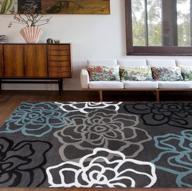

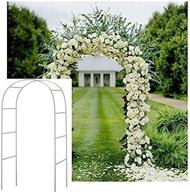

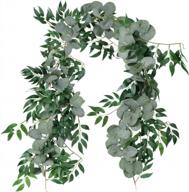
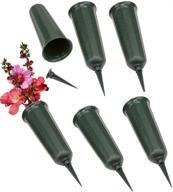
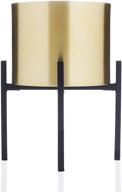
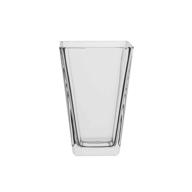
![🌸 wgv clear glass cylinder vase, 5x12", tall centerpiece arrangement for wedding party event home decor, floral container [height options available], 1 piece logo](https://images.revain.org/blob/revain_storagex1mptn5_923888cec8@128x128.jpg)
